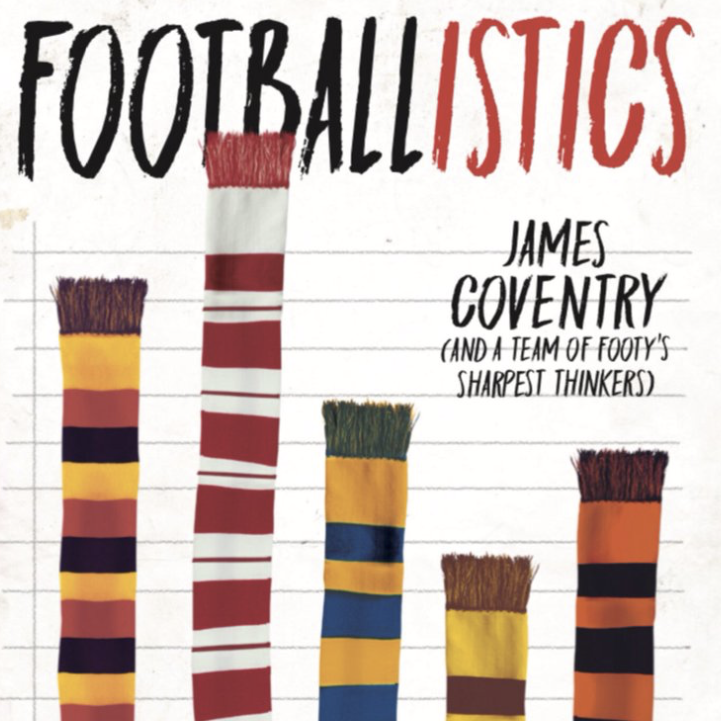Number crunchers challenging footy’s conventional wisdom
🔗 [SYSTEM UPDATE] Link found. Timestamp incremented on 2025-11-26 13:55:13.Statistics, historically treated with suspicion, are slowly establishing a foothold in the culture of Australian football. NATHAN JOHN looks at a new book that might help change all that.

By NATHAN JOHN,
sports editor

Statistics, historically treated with suspicion, are slowly establishing a foothold in the culture of Australian football, with clubs hiring number crunchers, fans operating blogs and journalists testing the waters.
In new release Footballistics, James Coventry and a team of analysts explore this growth and a handful of the sport’s truisms through the prism of data.
A sports journalist with the ABC and the author of Time and Space, a history of the evolution of tactics in Australian football, Coventry was inspired to turn his focus to “game performance analysis” by an American sports writing culture where stats are more widely used to explain the action.
“I’m a big fan of [basketball] writers like Zach Lowe and sites like Cleaning the Glass, where they use advanced metrics to be able to quantify what’s happening on the court and explain things that are otherwise hard to explain and meld it into stories that are easily digestible,” he said.
With no training in statistics but a healthy interest in the numbers and the stories they can tell, Coventry drew on the skills and knowledge of an online community of footy analysts.
“I started following guys [on Twitter] like Matt Cowgill who runs The Arc, Robert Younger who runs Figuring Footy, Tony Corke from Matter of Stats, Cody and Sean at HPN," he said.
“I started reading their blogs a couple of years ago and one day I thought it’d be great to maybe get together on one website or get them to collaborate together on a project.
“I hadn’t met any of them personally, but I sent them each a message on Twitter and outlined the idea that I had and fortunately they were all keen.”
Coventry’s premise was to blend the insights produced by data analytics with his journalistic ability to convey a narrative, in order to make the findings more accessible to a broader spectrum of fans.
“I think to get it to a wider mainstream audience you need to couch it a little bit more in terms of telling a story about what the numbers mean, so that has been my job during the process of writing the book.”
While his collaborators set to researching and challenging football’s conventional wisdom, Coventry travelled the country interviewing people in the club environment.
“I went to Port Adelaide and spent some time looking at how they train for goal kicking and spoke to their goal kicking coaches, their club psychologist about what he tells the players to do when they’re lining up for goal and also spoke to Charlie Dixon who had some issues at key points last year.”
http://gty.im/844836462
An upset Charlie Dixon after he infamously missed a goal in last year's elimination final, but statistics show he is still one of the most accurate kicks in the game.
Dixon wore criticism for his inaccuracy following the Power’s extra time elimination final defeat to West Coast last season, having kicked 3.6 in an after-the-siren loss, but Coventry and the analysts he enlisted for a chapter on goal kicking accuracy found it was a blemish rather than a trend.
“The funny thing about Charlie was we had already done a table that showed players’ goal-kicking accuracy over the past 50 years and when we started writing the chapter he ranked 12th for all time or something like that.
“He was actually completely the opposite of the public’s perception of him.”
Delving into the numbers behind truisms in sport is a theme that has been explored in other codes, notably Simon Kuper and Stefan Szymanski’s Soccernomics, a tome Coventry acknowledges as a considerable influence on Footballistics.
“The difference between that book and ours is we probably lean a little bit more heavily towards the in-game analysis.
“Goal kicking, score involvements, momentum, score progression and things like that whereas Soccernomics was largely about off-field finances.”
Analysis drawing primarily on advanced metrics has yet to break through in mainstream coverage of footy, and Coventry believes this is down to unavailability of data and a lack of presenters with the ability to contextualise it.
“In other sports there’s an absence of tight control over the stats, it seems to flourish a bit more and fan blogs have picked it up. It’s created interest of people following those blogs and then the media has realised that and picked it up. We haven’t quite gotten to that stage in Australian football.
“Hopefully in the coming years it’s something that might change a little bit.”
Footballistics is available from June 18.





